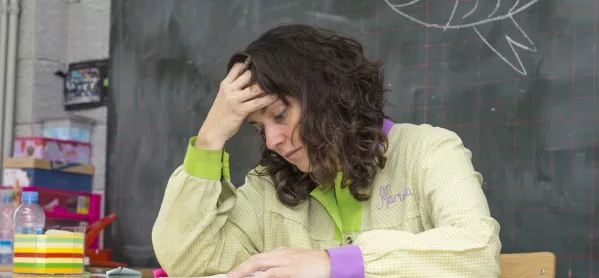Let’s be honest: when it happens day after day, challenging behaviour such as disobedience, backchat, anger issues or other disruption from a child can really grind us down. It can change us from being patient, compassionate people with a genuine desire to make a difference, into sleep-starved, wild-eyed desperados, convinced a student has a personal vendetta.
It can make us forget that if a student has barriers that stop them learning the way they want to, it is up to us to identify how we can help them.
We all have those children in our classes who “behave badly and don’t learn”. That’s what we used to say. Today, we would say that they find it challenging to focus, produce positive outcomes and demonstrate appropriate learning behaviour. This terminology, while occasionally annoying, is rightly different. Children have an inbuilt curiosity and desire to learn, whatever their background and history.
So if you are struggling with a student, despite the shame culture there is in some schools (“I can’t tell anyone I’m not coping”), it’s vital to tell someone - your Sendco, head of year, head of department. Pick someone who you know will be supportive and brainstorm different ideas with them. Find a way to help that child re-engage.
Here are a few techniques that have worked with tricky kids for me over the years: -
1. Be positive and proactive
Identify the times in the day that seem tricky - first thing in the morning, after breaks, when the recording starts - and make sure you or a TA are there to chat, smile and generally talk things through in a friendly, positive way. If they think you like them and want to give them time, it’s amazing how this will be reciprocated.
2. Break down tasks into achievable steps
Writing a page or even half a page about the setting of a poem, however long you’ve spent preparing for it, may seem unachievable for your troubled child. “I might as well play up as I’m not going to get that done!” It can be useful to offer breaks in the task, either via a chance to get up and move or a brief distraction of a change in pace on a different task. But remind them they need to concentrate during your input, if they are to get those breaks. Also, at the start, set out clearly what is still expected of them in the task. I’ve seen this work well.
3. Have a systematic behaviour management system that everyone uses
It’s a simple one but it seems not as common as it should be: teachers, TAs, catering staff - everyone in a school - should be working from the same behaviour management system. When implemented consistently, even the trickiest students tend to get the message.
4. Get to know them
Chat to them when you’re on duty, find out what they’re interested in, do some homework yourself if need be so you can talk intelligently to them about the things that matter to them.
5. Imagine this child is your own, or even you
Some of us have forgotten what it’s like to be small, powerless, afraid. Release the child inside.
Deborah Jenkins is a class teacher at Heathfield Junior School, Whitton




